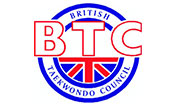The Art

Elements of our Training
Patterns
Tae Kwon-Do patterns are a set of moves (mainly attack and defence) against an imaginary opponent. They act as a barometer of skill, and each pattern uses more advanced skills to show the student’s expertise. They are practised to improve Tae Kwon-Do techniques, help develop sparring techniques, improve flexibility, master body shifting, tone muscles and improve breath control. Each pattern is dedicated to an inspirational person or event in Korean history.
Line work
Line work involves individual techiques and short combinations being performed in repetition whilst moving forwards and backwards. This helps students gain better co-ordination so that the technique and any relevant body shifting can be performed equally well using the non-dominant side of the body.
Set sparring
This involves practising attacks and defences with a partner, and develops timing, skill, precision and distance. There are several types of set sparring which gradually increase in skill and complexity to eventually prepare the student for free sparring.
Free sparring
This involves using attack and defence skills against a moving opponent in a controlled environment, wearing protective sparring gear and using light/semi-contact. For students who enjoy competing, there are several local and national competitions throughout the year.
Theory
In addition to their practical training, students are expected to learn theory and this is tested at each grading. Knowledge of theory is required to perform to a high level in class, and encourages a deeper understanding of the art.




Plymouth East T.A.G.B Tae Kwon-Do is a member of the British Taekwondo Council, the National Governing Body for Taekwondo. The BTC has achieved NSPCC Advanced Standards in Safeguarding.
Plymouth East T.A.G.B Tae Kwon -Do adheres to all the BTC Safeguarding Policies and Procedures.
